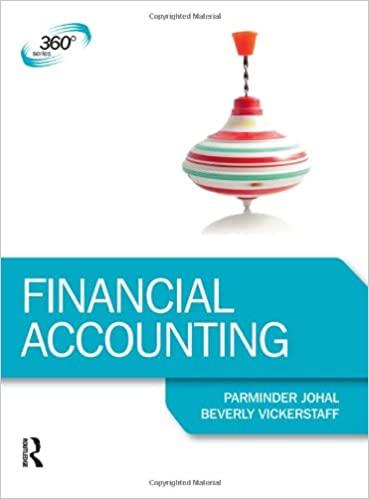
The solution to part a and part b is ALREADY provided, but can someone explain to me in detail why we use different numerators for part a and part b. We divide 1,250,000 by 50,000 hours for part a but for part b, our numerator instead is 500,000 as it is divided by 50,000? why is part a (1,250,000 / 50,000 hrs= $25) with 1,250,000 as numerator and why does part b (500,000 / 50,000 = $10) have a different numerator(500,000 instead of 1,250,000)?
. Compute the following for August:
a) Total number of actual direct manufacturing labor-hours used
The solution to part a:

b) Total number of standard direct manufacturing labor-hours allowed for the units produced
The solution to part b

Comprehensive review of Chapters 7 and 8, working backward from given variances. The Gallo Company uses a flexible budget and standard costs to aid planning and control of its machining manufacturing operations. Its costing system for manufacturing has two direct-cost categories (direct materials and direct manufacturing labor - both variable) and two overhead- cost categories (variable manufacturing overhead and fixed manufacturing overhead, both allocated using direct manufacturing labor-hours). At the 50,000 budgeted direct manufacturing labor-hour level for August, budgeted direct manufacturing labor is $1,250,000, budgeted variable manufacturing overhead is $500,000, and budgeted fixed manufacturing overhead is $1,000,000. The following actual results are for August: Direct materials price variance (based on purchases) Direct materials efficiency variance Direct manufacturing labor costs incurred Variable manufacturing overhead flexible-budget variance Variable manufacturing overhead efficiency variance Fixed manufacturing overhead incurred $179,300 F 75,900 U 535,500 10,400 U 18,100 U 957,550 The standard cost per pound of direct materials is $11.50. The standard allowance is 6 pounds of direct materials for each unit of product. During August, 20,000 units of product were produced. There was no beginning inventory of direct materials. There was no beginning or ending work in process. In August, the direct materials price variance was $1.10 per pound. In July, labor unrest caused a major slowdown in the pace of production, resulting in an unfavorable direct manufacturing labor efficiency variance of $40,000. There was no direct manufacturing labor price variance. Labor unrest persisted into August. Some workers quit. Their replacements had to be hired at higher wage rates, which had to be extended to all workers. The actual average wage rate in August exceeded the standard average wage rate by $0.50 per hour. Standard direct manufacturing labor rate = $1,250,000 = 50,000 hours = $25 per hour Actual direct manufacturing labor rate = $25 + $0.50 = $25.50 Actual direct manufacturing labor-hours = $535,500 - $25.50 = 21,000 hours Standard variable manufacturing overhead rate = $500,000 = 50,000 = $10 per direct manuf. labor-hour Variable manuf. overhead efficiency variance of $18,100 = $10 = 1,810 excess hours Actual hours - Excess hours = Standard hours allowed for units produced 21,000 - 1,810 = 19,190 hours









